How to Get Started With Video Ads on YouTube Using Google AdWords
Over a decade later, the platform (now owned by Google) has become the most popular destination for user-generated content from instructional videos to live streams. Whether you’re looking for tutorials on how to build a computer or just want to relax with funny cat videos, chances are you’ll find it on YouTube.
YouTube was launched back in 2005 as a video sharing platform.
Over a decade later, the platform (now owned by Google) has become the most popular destination for user-generated content from instructional videos to live streams. Whether you’re looking for tutorials on how to build a computer or just want to relax with funny cat videos, chances are you’ll find it on YouTube.
YouTube boasts a staggering one billion active users, reaching nearly one-third of all Internet users. Compared to other multimedia platforms for video consumption, there’s just no competition.
Here’s the latest usage statistics from Statista:
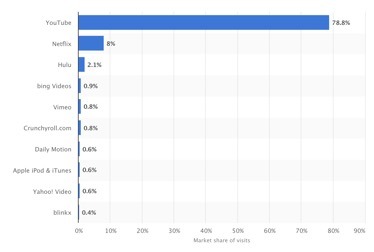
This kind of reach is why even huge media corporations like BBC are willing to make some of their content available on this platform. And for business owners, YouTube represents a major opportunity to increase brand visibility through advertising.
1.0 Why Advertise on YouTube
Search engines are one of the main starting points for product research. Whether for shopping advice on important items like home appliances or ordinary products like candles, shoppers turn to Google.
Think about the last major purchase you made:
Chances are you didn’t just immediately pull the trigger on it. You likely read a few reviews first about the product and to compare prices. You’re not alone as data has found that 81% of shoppers conduct research online.
Just like with Google, consumers are also turning to YouTube for purchasing decisions—making it an increasingly key marketing channel.
Here’s an example of search results that compare some of the top smartphones:

Shoppers can simply sit back and click the play button. It’s a nice change from scrolling through pages and pages of text for product recommendations.
YouTube continues to see exponential yearly growth. The good news is it’s not too late to incorporate video advertising into your marketing efforts. And now with new search network features in Google AdWords, you’ll be able to reach even more prospects on YouTube.
How?
With
Here we’ll look at what this new feature is all about and how to get started with a campaign.
2.0 Custom Intent Audience Overview
Let’s start with an example:
An individual has just entered the workforce and is looking for investment advice. He also wants to keep things simple and hands-off for the most part. It just so happens that your business offers relevant services that fit his needs perfectly.
Now imagine you could target that prospect with a relevant ad on YouTube based on a previous search related to what you offer.
Custom intent audience lets you do exactly that.
In the example below, people who search for “financial advisor” on Google would see an ad from Betterment on the next video they watch on YouTube.
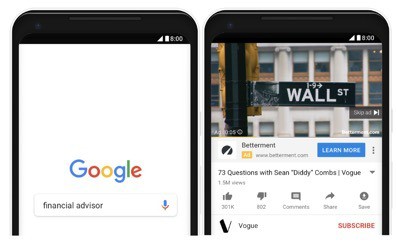
Despite not matching the video subject, the ad itself is still relevant to the user’s interest.
The result?
Betterment was able to use custom intent audiences to increase their ROI by 6x compared to previous campaigns on YouTube and saw a 245% increase in branded searches on Google.
Not bad for a new feature that was released earlier this year.
With custom intent audience, you’ll be able to target prospects who have already expressed interest in a product or service your business offers. This kind of targeting essentially lets you skip the first stage of the buyer’s journey and increase conversions as a result:

Google has stated that custom intent audiences work best when combined with TrueView ads.
Uh, what?
Don’t worry, it’s not as confusing as it sounds but let’s take a closer look.
3.0 What Are TrueView Ads?
AdWords is the Pay-Per-Click (PPC) platform from Google.
Advertisers bid on keywords which trigger targeted ads in the search results when searched for. What makes AdWords such a compelling platform is that advertisers only pay for traffic their ads generate.
TrueView takes that same concept and applies it to video advertising on YouTube. The premise is simple: You give viewers a choice to watch your video ads. And you only pay when users interact with your ad or click through, just like with AdWords.
It’s a win-win situation: You’re able to reach the right audience and users get to see the content they want.
Here are two types of TrueView ads:
1. TrueView In-Stream Ads If you’ve ever spent enough time on YouTube, you’ve likely seen short ads that play just before the actual video. These are examples of in-stream video ads:
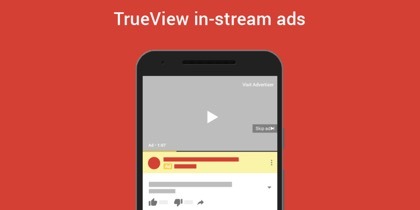
Viewers see five seconds of the ad but then have the option to either continue watching or skip it. You’ll only pay when a viewer watches at least 30 seconds or interacts with the ad (whichever is shorter). The ad shown may be influenced by searches on Google when used with custom intent audiences.
2. TrueView Video Discovery Ads Discovery ads let advertisers place video ads on the search results, watch page, and homepage of the desktop and mobile versions of YouTube:
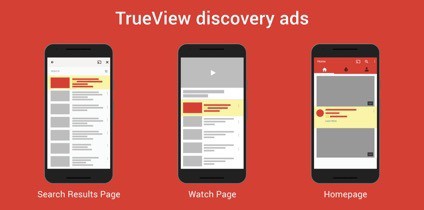
Discovery ads can also appear on websites that participate on the Google Display Network.
Both formats allow you to expand your reach.
Now the million dollar question: How does TrueView translate to actual results?
Here were the results when Google looked at data from brands that advertised on YouTube:
“Looking at 89 US brands that ran Brand Lift studies, we found viewers exposed to TrueView ads are 10x more likely to engage with the brand on YouTube, such as visiting or subscribing to the brand channel, watching more from that brand, or sharing the brand video.”
Ad recall also had a positive lift of 43%. Viewers exposed to TrueView ads were far more likely to recall its content compared to ads that were viewable alone.
Your results will vary of course.
But needless to say TrueView ads show promising potential.
Let’s look at starting with your first marketing campaign on YouTube.
4.0 How to Setup a YouTube Campaign on AdWords.
Step 1: Start by logging into your Google AdWords account. From the campaigns tab, click the blue plus icon to create a new campaign and you’ll be asked to select a campaign type:

Step 2: Since we’ll be running ads on YouTube, select “Video”. Next you’ll be asked to select a goal that fits with your campaign objectives:

Step 3: Selecting “Leads” lets you use ad formats designed to drive sign-ups with a compelling call to action. But if you only want to focus on brand awareness and increase your reach to relevant audiences, you can select that option too.
Depending on the campaign type you select, you may see additional subtypes:

You can also opt to create a campaign without a goal.
For this example, we’ll choose “Brand awareness and reach” as the campaign type and “Standard awareness” as the subtype. Click “Continue” when you’re ready.
Step 4: On the next page you’ll be asked for additional details to create your campaign.
Give your campaign a recognisable name. That way you can easily pull up the relevant reports to evaluate the effective of your video ads.

Then enter in a daily budget or the average amount you’re willing to spend a day. You can also select a campaign total in the dropdown list which is the total ad spend for the campaign’s duration.
 Step 5: Next, select start and end dates for your campaign:
Step 5: Next, select start and end dates for your campaign:

Step 6: Under “Networks”, your video may appear on YouTube search results or videos depending on your campaign type. If you want your ads to appear on the Display Network then check “Video partners on the Display Network”. This means that viewers will be exposed to your ads as they browse other sites.

Step 7: Your goal may be to increase brand awareness but you also want to limit where you ads appear. Under “Content Exclusions”, you can select individual categories to opt out of.
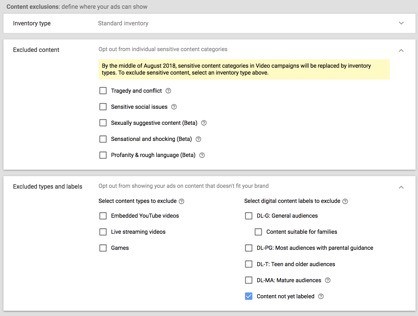
Step 8:The “Audiences” tab is where you’ll be able to define your audiences to target. Select the middle option “What they are actively researching and planning” and you’ll see custom intent audiences:
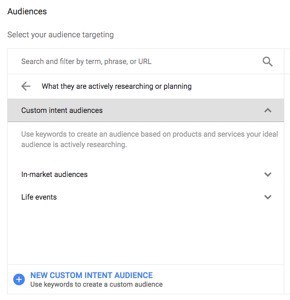
If there are no options you’ll need to create one.
Step 9: Click the blue plus button next to “New Custom Intent Audience”. Then enter an audience name and the search terms of the audience you want to reach.
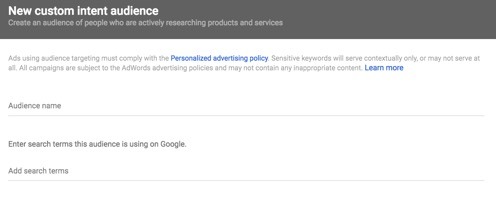
Step 10: Under “Content” you can further define the keywords or topics that trigger your ads and where they can appear:

Step 11: Then search for your video ad or paste in the YouTube URL:
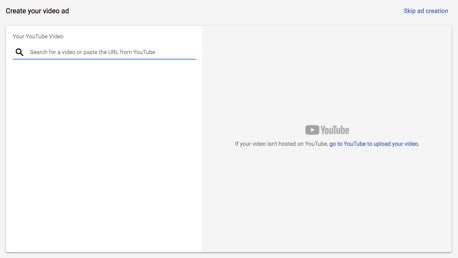
YOU’RE DONE! Please do note though that your video has to be on YouTube before you can advertise it. Here’s an example of what this section looks like for a review on Nike shoes:

Google also shows a preview of how your ad will look like on mobile and desktop. Double check that everything is correct before continuing.
And that’s all there is to it!
Now you’ll be able to advertise on YouTube with custom intent audiences. The hard part is done but your work is still far from over. Be sure to regularly check in on your AdWords account to see how your campaigns are performing and make any adjustments as necessary.
Conclusion
The advent of the Internet and social channels has vastly changed the marketing landscape.
It’s estimated that it takes about 6 to 8 touches to generate a sale. This means it typically takes that many interactions with prospects before they’re comfortable enough to make a purchase. With new targeting features on AdWords, you’ll be able to combine your marketing efforts across search and YouTube. Follow the guide outlined here to target your ideal prospects and drive more conversions.
